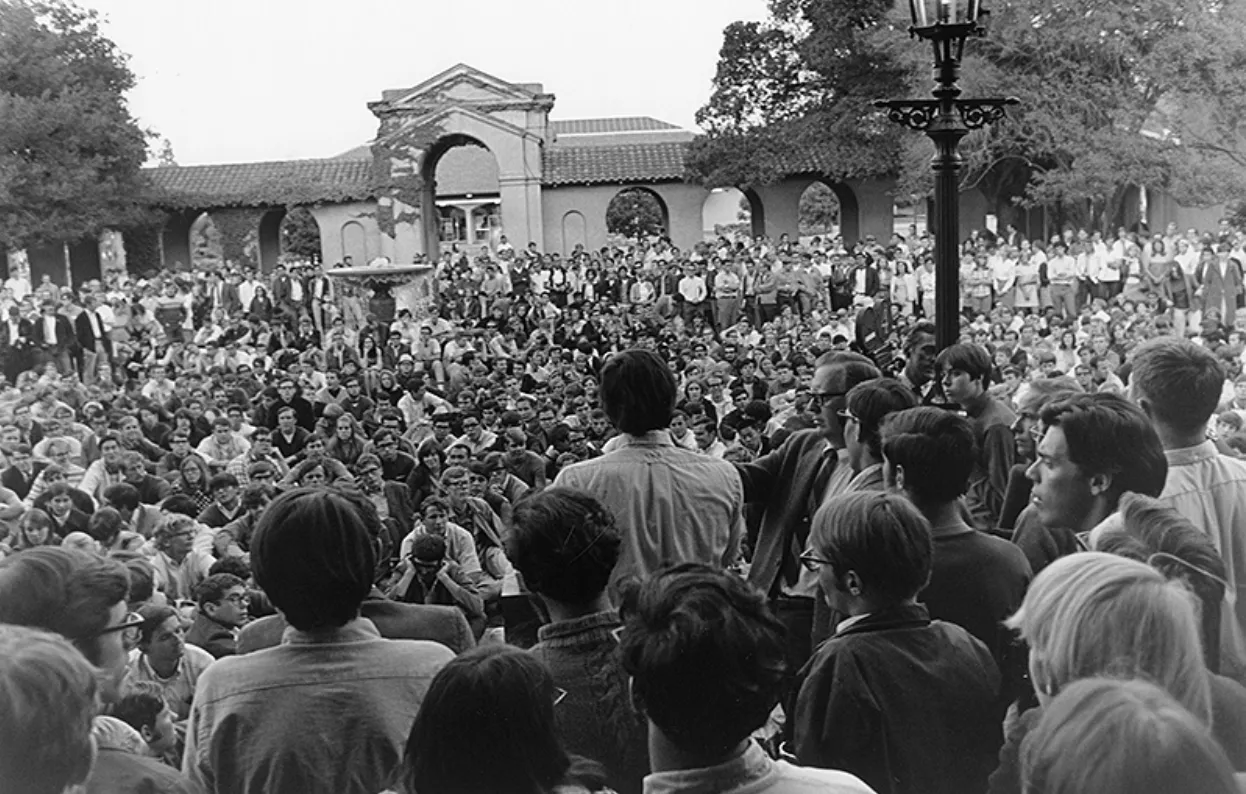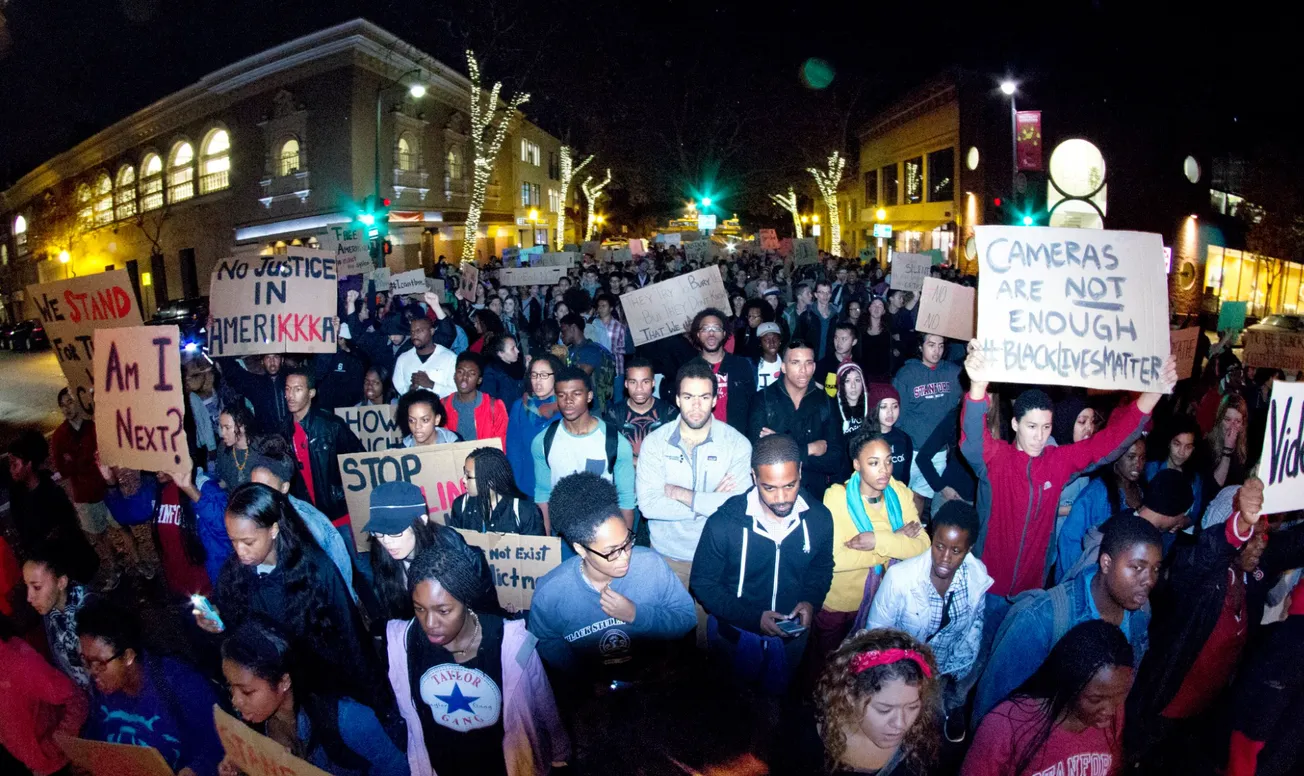Table of Contents
Flashback to May 9, 1977. According to the police, it’s “peaceful” on Stanford campus as about 1,000 students protest Stanford’s financial ties to Apartheid-era South Africa. Even after 294 arrests — most of them students — 900 return the following day to continue their campaign. Chants of “Apartheid means profit, Stanford won’t stop it” fill the air. Hoping to avoid another round of mass arrests, students vote to end protests the next day.
As the first divestment campaign on campus, it’s remembered not for its success, but for causing the largest mass arrest since the anti-Vietnam protests. Attempting to preserve its image, Stanford’s board of trustees issued a statement affirming that each trustee held “a deep aversion to the practice of apartheid.” Years down the road in 1985, Stanford did create a formal policy of guidelines for investing in South Africa-related companies, but it never completely or officially divested from South Africa. Even so, some argue the movement did contribute to the end of apartheid. Nelson Mandela himself said divestment was crucial for the end of apartheid and he later made the effort to thank colleges for their protests.
Fast forward to this past spring on May 6, 2014, when Fossil Free Stanford, an on-campus student group, reached out to over 2,000 students and successfully petitioned the university to divest its stock in coal-mining companies. Even alumni joined the collaborative effort, sending over 500 letters to President Hennessy calling for divestment. Alongside this multifaceted campaign, Stanford’s Advisory Panel on Investment Responsibility and Licensing (APIRL) contributed to the trustees’ decision to divest. APIRL is a panel comprised of students, faculty, staff, and alumni that conducted an investigation over the course of several months concerning Stanford’s investment in fossil-fuel companies and the policy’s possible environmental and social consequences. Officially, the announcement to divest meant Stanford would no longer invest in approximately 100 coal-mining companies, and would refrain from doing so in the future.
Despite Stanford’s $18.7 billion endowment, this divestment did not make much of an economic impact on the coal-mining companies in question. Opponents argue this symbolic gesture actually did more harm than good. In giving up its stake in the company, the argument goes, Stanford also gave up its power as a shareholder. The companies likely found new investors fairly quickly, while Stanford lost the power to demand change from the inside. Critics refer back to 1977, when divestment failed to bring about change even on a symbolic level. Others berate Stanford’s decision for ignoring the purpose of an endowment: to make money, money that could be spent in furthering the university’s research in sustainability.
However, many still view the university’s divestment from coal as a landmark victory. Stanford was the first institution with its level of prestige and national influence to officially lend support to the divestment campaign, and many believed it would encourage other universities to follow suit. Beyond that, this move helped more closely align Stanford’s stated values with its investments.
Which bring us to present-day Stanford, in all of its coal-investment-free glory. On Monday, October 20, Fossil Free Stanford held a Divestment Rally in the hopes of getting Stanford to “Divest the Rest!” Fossil Free held the rally to garner support before APIRL’s meeting on Tuesday. The rally’s goal was to get divestment back on APIRL’s agenda (Fossil Free recently submitted a second request to divest from oil and gas). The rally also coincided with a 24-hour fast by Fossil Free Stanford members to support their counterparts at Harvard University, where students had been fasting in shifts of three days to protest President Faust’s refusal to meet with Fossil Free. Other recent activity of the Stanford branch includes its presentation to alumni during Homecoming Weekend in the hopes of building an alumni base similar to that of the Spring 2014 divestment campaign.
Fossil Free Stanford believes divestment is the best option available to combat climate change, despite critics’ skepticism. In light of how little climate change efforts have achieved thus far, Fossil Free views divestment campaigns as the best way for the largest number of people to engineer change. The group acknowledges that an economic impact will be extremely hard to achieve, and is therefore not a primary goal of divestment. In fact, Fossil Free is wary of causing an economic impact that would cost jobs to the many employed by coal-mining companies. Rather, the decision to divest is a political one, in the hopes that other institutions will follow Stanford’s steps. Eventually, the sentiment against fossil-fuel companies may be great enough to force the companies to focus on sustainability.
Fossil Free also strives to raise awareness in an effort to prevent current college students from becoming fossil fuel investors in the future. When asked whether investors lose bargaining power by divesting, Fossil Free Stanford founder Sophie Harrison responded in the negative, arguing that shareholder influence is not effective in this case. To respect the 2 °C temperature increase maximum, as determined by the UN, “the vast majority of fossil fuel companies reserves will need to stay in the ground… no sane shareholder would ever vote for such a resolution, because it would greatly undermine the value of the company they are invested in.”
Fossil Free Stanford’s future successes are still uncertain; substantial changes may be made within the next months (as with what happened with coal), or nothing could happen at all (leaving this new movement to join the failed South Africa divestment initiative). Whatever happens, many will be watching to see how the University responds to the emphasis students and faculty are placing on this issue.







